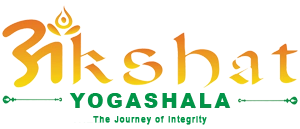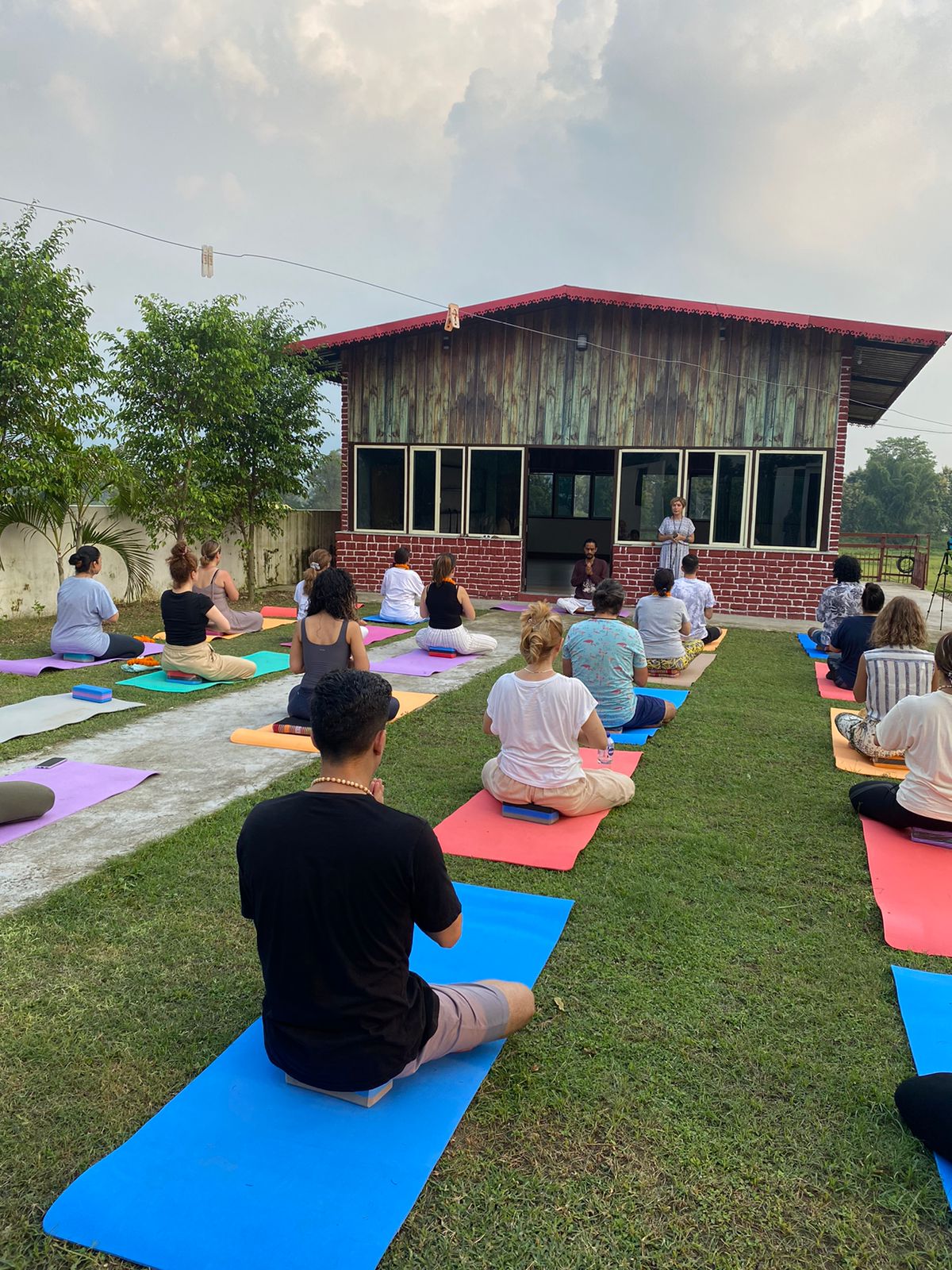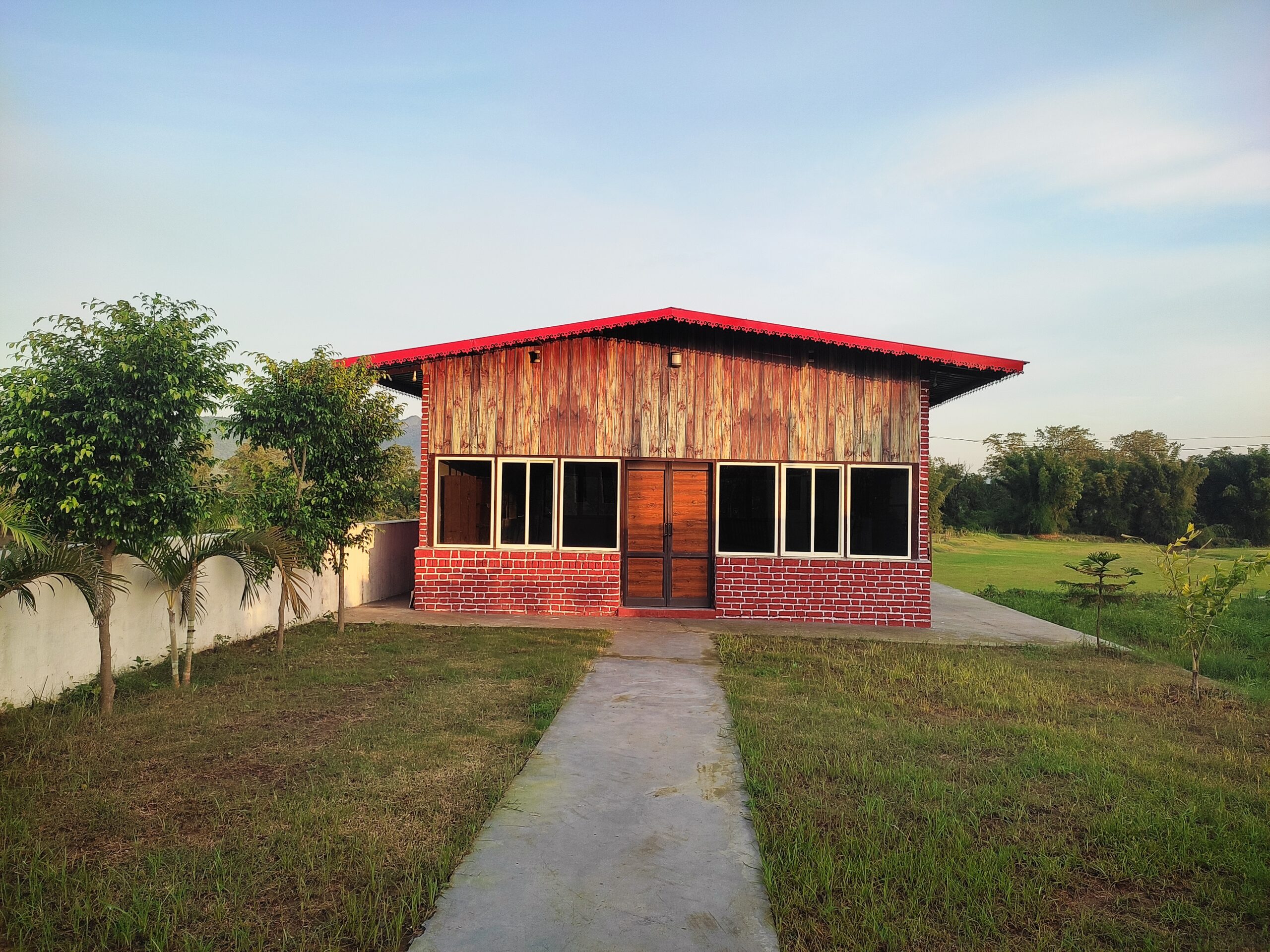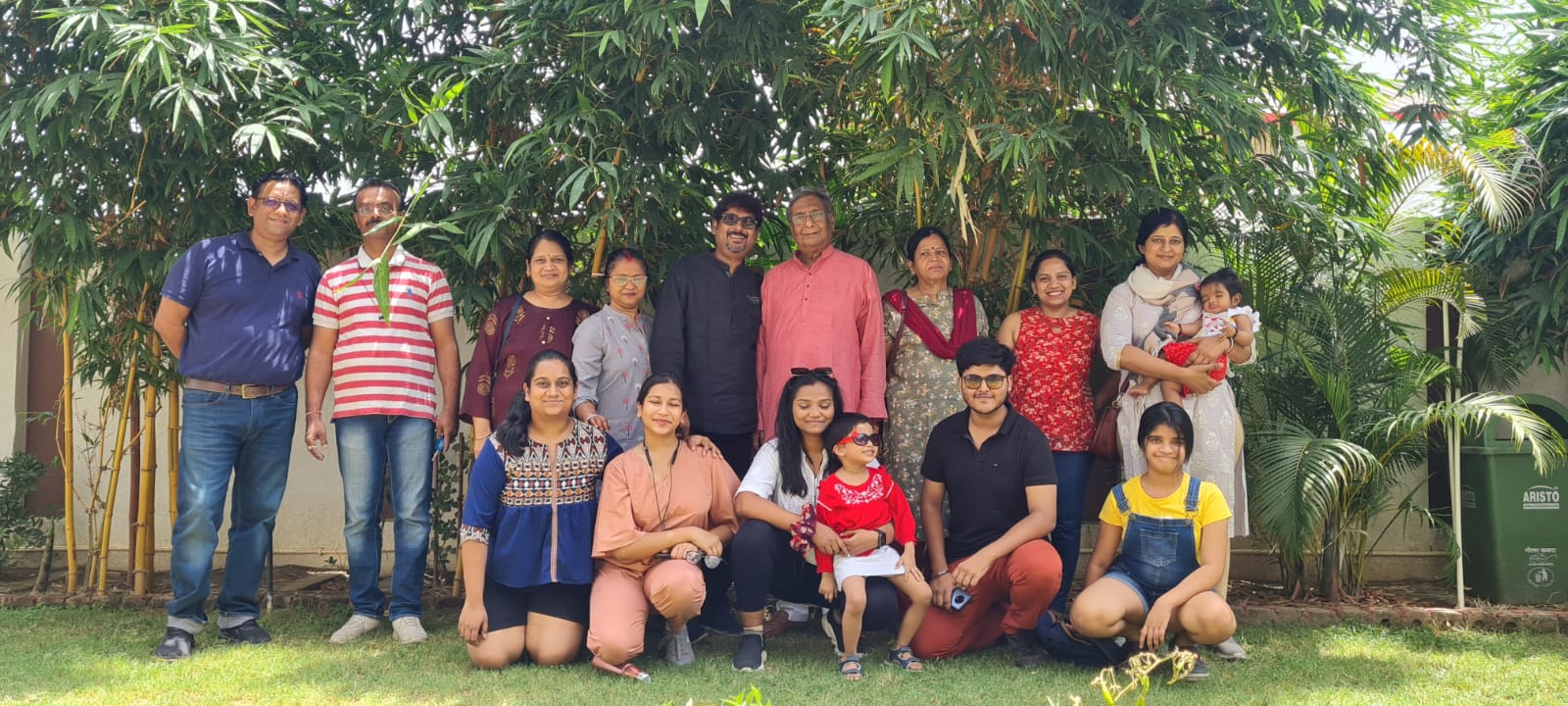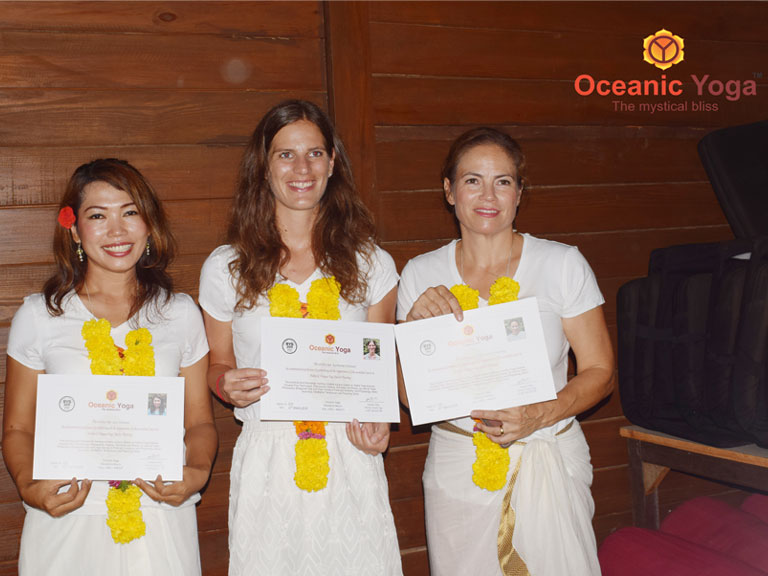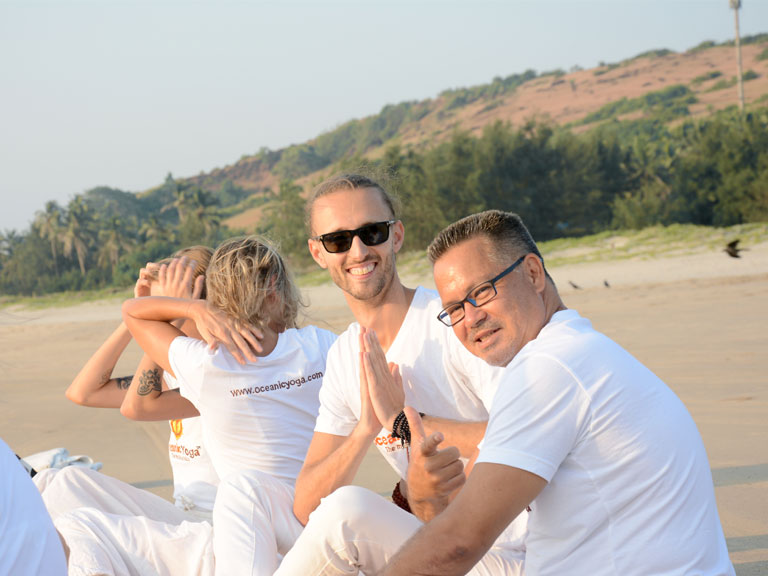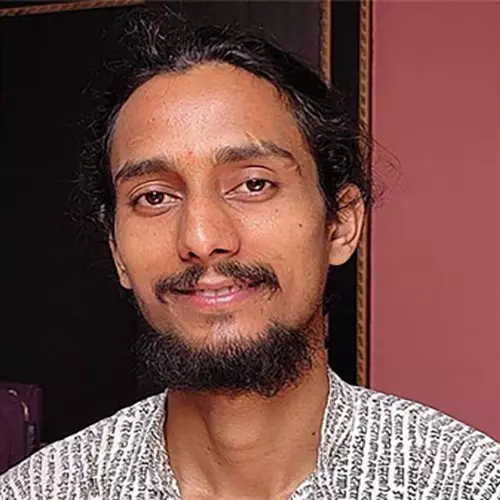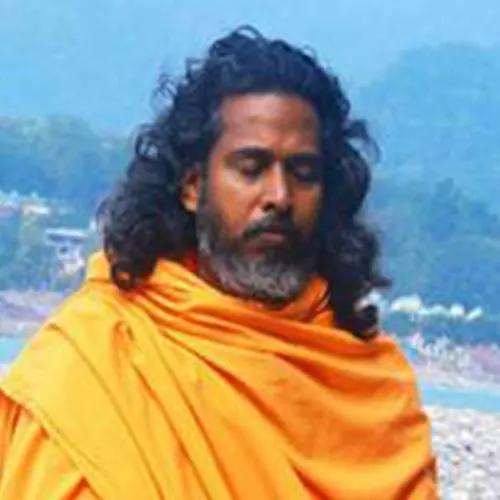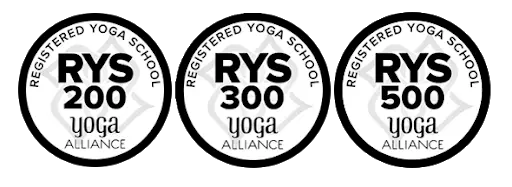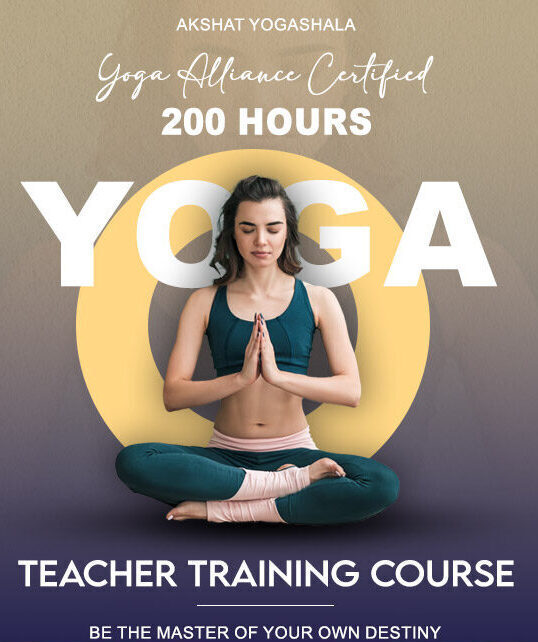
Become An International Yoga Teacher
200 hour Yoga, Reiki and Naturopathy Teacher Training Course
in Rishikesh
- 24 Days Shared Accommodation
- 10 to 20 Students in one Batch
- Yoga Alliance Certification
- Highly Qualified Yoga Teachers
EMAIL US: infoakshatyogaschool@gmail.com
COURSE FEE 200 HOUR:
€1599 €1200
(Shared Room)
€1799 €1500
(Private Room)
Join Yoga Teacher Training Course
- 3 Times daily nutritious vegetarian meals and herbal tea
- AirPort pickup
- Laundry
- AC Room
- Cleansing Kit
- Training Manuals
- Full support during your stay at the ashram and help provided 24/7
- Theoretical and practical Classes
- WIFI access room
- Weekend excursions
- Study material
- Kirtan Night
- Outdoor activity
» What Sets Us Apart: Exclusive Reiki & Naturopathy Expertise «
- Air fare
- Visa
Yoga Teacher Training Course Daily Schedule
AKSHAT YOGASHALA 200-Hour teacher training program’s schedule is designed in a very balanced way that it keeps the student in contemplation of the subject throughout the day and also allows them to have personal time.
The schedule is the best integration of the theory and practice of yoga. It also allows the student to stay energetic for all the classes.
The daily schedule of the course is as follows:
| Time | Training |
|---|---|
| 05:00 am | Wake up |
| 06– 07:30 am | Hatha yoga |
| 7:30 – 8:30 am | Shatkarma/ Pranayama/Naturopathy |
| 9:00 – 10:00 am | Breakfast |
| 10:00 – 11:00 am | Yoga Philosophy |
| 11:00 – 12:00 pm | Adjustments/Alignment class (IYENGER Yoga)/Teaching Methodology |
| 1:00 – 2:00 pm | Lunch |
| 3:00 – 4:00 pm | Anatomy and physiology of yoga |
| 4:00 – 5:30 pm | Ashtanga vinyasa yoga |
| 5:30 – 6:00 pm | Tea break |
| 6:00 – 7:00 pm | Meditation & mantra chanting |
| 7:00 – 8:00 pm | Dinner |
| 9:00 pm | Light off |
Choosing Akshat Yogashala as your yoga teacher training school offers many benefits
Experienced Teachers: Akshat Yogashala has highly experienced and qualified teachers who have a deep understanding of Yoga philosophy, asanas, pranayama, meditation, and teaching methodology.
Comprehensive Curriculum: Their yoga teacher training program offers a comprehensive curriculum that covers both theory and practical aspects of Yoga. Students learn about the history and philosophy of Yoga, as well as develop their teaching skills and gain practical experience in leading yoga classes.
Small Class Sizes: The school maintains small class sizes to ensure personalized attention and effective learning. This enables students to receive individualized feedback and guidance from the teachers.
Traditional Approach: Akshat Yogashala follows a traditional approach to teaching Yoga, emphasizing the importance of alignment, breath control, and meditation. This approach helps students develop a deeper understanding and connection to Yoga.
Affordable Fees: The school offers competitive and affordable fees for their yoga teacher training courses, making it accessible to students from all backgrounds.
International Yoga Certification – Yoga Alliance USA:
You will be certified to teach Yoga globally after successfully completing this online yoga teaching certificate which is internationally valid
Overall, Akshat Yogashala provides a supportive and nurturing environment for students to deepen their understanding of Yoga and develop their teaching skills.
YOGA TEACHER TRAINING COURSE SYLLABUS
The Meditation section of the syllabus covers the following:
- Introduction of Meditation
- Om meditation
- Chakra sound meditation
- Chakras breathing meditation
- Nada Bhrama meditation
- Prayer meditation
- Mantra Meditation
- Meditation according to Patanjali Ji
- Dharna, Dhyan & Shamadhi
Pranayama is generally defined as breath control. Although this interpretation may seem correct in view of the practises involved, it does not convey the full meaning of the term. The word pranayama is comprised of two roots: ‘Prana’ plus ‘Ayama’. Prana means vital energy or life force.
- Introduction of pranayama
- Sutras of Pranayama
- Breath, Prana, Pranayama
- Normal breathing awareness
- Abdominal Breathing
- Thoracic Breathing
- Clavicular Breathing
- Deep yogic breathing
- Alternative nostril breathing
- Surya Bedi Pranayama
- Bhramari Pranayama
- Ujjayi Pranayama
- Bhastrika Pranayama
- Sheetli Pranayama
- Shitkari Pranayama
- Bhandas, mudra
- Meditative posture & seated posrure
It is the self-healing procedure of the body, especially with the elements present around us in nature. It is a scientific and holistic system at the same time, awakening the inherent power of the body to regain its health and fitness. It further helps in treating various diseases and illnesses.
At Akshat Yogashala, the theoretical classes of yoga ttc in Rishikesh explains the concept of Panchamahabhutas.
“SARVAM DRAVYAM PANCHABHOUTIKATVAM”
Meaning – All things present on the earth are formed by Panchamahabhutas.
These Panchamahabhutas are Earth, Water, Fire, Air, and Ether. These are also the foundational constituents of the body.
The Naturopathy session at Akshat Yogashala during the 200-hour yoga ttc in Rishikesh provides Mud Therapy. It uses moistened earth in the right way to heal the body.
Mantra?
Mantra is the divine accumulation of words, by which we can attain extreme spirituality and destroy negative obstacles. “Man” in Mantra means “Mind” and “Tra” means “Power”.
Mantra Reciting
Reciting the mantra helps the person in getting supreme knowledge and with this, the mind gets calm. With this, one gets free from the bondage of birth and death.
Types of Mantra
There are mainly three types of mantras. These are –
- Bija Mantra (Root Mantra) – It connects you to the seven chakras of the body and Hindu deities.
- Saguna Mantra (with form) – It awakens the actual form of a particular type of deity.
- Nirguna Mantra (without form) – It covers the fundamental truths mentioned in yogic philosophy.
The course of Yoga Teacher Training 200 hour Rishikesh India at our yoga school explains the following types of mantras, Obstacle removal mantra Guru mantra
- Pranav mantra
- Teacher and student mantra
- Mantra for peace
- Patanjali mantra
- Maha mritunjaya mantra
- Realization mantra
- Food mantra
- Completeness mantra
Ayurveda is often integrated into yoga teacher training programs as it provides a holistic approach to health and wellness. Ayurveda is an ancient Indian system of medicine that emphasizes the importance of balance and harmony in the body, mind, and spirit.
In a yoga teacher training program that includes Ayurveda, students learn about the basic principles of Ayurveda, including the three doshas (Vata, Pitta, and Kapha) and how they relate to health and wellness. They also learn about the various Ayurvedic herbs, oils, and treatments that can be used to support overall health and wellbeing.
By integrating Ayurveda into a yoga teacher training program, students gain a deeper understanding of how yoga and Ayurveda complement each other in promoting physical, mental, and spiritual health. They also learn how to incorporate Ayurvedic principles into their yoga teaching, providing a more holistic and personalized approach to their students.
Overall, integrating Ayurveda into a yoga teacher training program enhances the depth and breadth of knowledge and skills that students gain, enabling them to offer a more comprehensive approach to health and wellness through yoga.
Shatkarma is the Sanskrit term for one of the six yogic purification techniques (kriyas) as outlined in the “Hatha Yoga Pradipika.” The purpose of these cleansing techniques is to keep the body strong, clean and healthy. They are said to remove toxins and anything blocking the flow of prana in the body. Practicing Shatkarmas internally purifies the body, which makes pranayama and meditation practice easier by preparing the body to perform these practices without distraction, discomfort or fatigue. This is a traditional yogic cleansing technique which is very effective and good to remove many illnesses and open the body blockages.
These Shatkarma Techniques are –
- Dhauti
- Basti
- Neti
- Nauli
- Trataka
- Kapalbhati
Yoga is not an ancient myth buried in oblivion. It is the most valuable inheritance of the present. It is the essential need of today and the culture of tomorrow. Rejuvenate your mind and soul with the Indian traditional yoga style called “Hatha” which will lift your body stamina and strength. This is the most popular and beneficial yoga style.
Advanced & Optional
- Joints Moments.
- Surya namaskara & Chandra Namaskara
- Yoga Mudrasana
- Matsyasana
- Gupta Padmasana
- BaddhaPadmasana
- ArdhaMatsyendrasana (half spinal twist)
- ParivrittiJanuSirsasana (spiralled head to knee pose)
- Poornabhujangasana (full cobra pose)
- Kurmasana (tortoise pose)
- Poornashalabhasana (full locust pose)
- PoornaDhanurasana (full bow pose)
- Lolasana
- Kukkutasana
- Garbhasana
- SaralBhujangasana
- Bhujangasana (cobra Pose)
- TiryakaBhujangasana
- Chakrasana (wheel pose)
- Hanumanasana (leg splitting pose)
- Poornamatsyendrasana (full spinal twist pose)
- Mayurasana (peacock pose)
- Padma mayurasana (Lotus or bound peacock pose)
- Gorakshasana (Yogi Gorakhnath’s pose)
- Sarpasana (snake pose)
- ArdhaShalabhasana
- Shalabhasana (locust pose)
- SaralDhanurasana (easy bow pose)
- ArdhaChandrasana (half moon pose)
- Setu Asana (bridge pose)
- Astavakrasana (eight-twists pose)
- Vrischikasana (scorpion pose)
- Inverted pose, balancing pose and core pose.
- Gomukhasana (cow’s face pose)
- Paschimottanasana (back stretching pose)
- GatyatmakPaschimottanasasna (dynamic back stretch pose)
- PadaPrasarPaschimottanasana (legs spread back stretch pose)
- JanuSirshasana (head to knee pose)
- Supta hasta Padaangushthasana (finger to toe stretch)
- Padahastasana (hand to foot pose)
- SirshaAngusthaYogasana (head to toe pose)
- Utthitajanusirshasana (standing head between knees pose)
An intensive and integral part of yoga, Ashtanga yoga style requires deep commitment and self-practice to achieve the goal. The retreat’s yoga instructors are the best Ashtanga yoga teachers around Rishikesh, India.
Standing pose, Intermediate Asanas
- Hasta Padangusthasana & Pada Hastasana
- Utthita Tri Konasana
- Parivrtta Tri Konasana
- Utthitan Parsva Konasana
- Parivrtta Parsva Konasana
- Prasarita Padottanasana A, B, C & D
- Utthita Parsvottanasana
- Ardha Matsyendrasana
- Yoga Nidrasana
- Tittibhasana
- Picha Mayurasana
- Vatayanasana
- Gomukhasana A & B
- Hasta Sirsasana (head stand)
- Utthita Hasta Padangusthasana
- Utthita Parsvasahita
- Utthita Eka Padasana
- Ardhabaddha Padmottanasana
- Utkastasana
- Virabhadrasana A,B and C
- Primary Asanas
- Paschimottanasana A, B and C
- Purvottanasana
- ArdhaBaddha Padma Paschimottanasana
- Tirieng Mukha Eka Pada Paschimottanasana
- JanuSirsasana A,B and C
- Marichyasana A,B and D
- Navasana
- Lolasana
- BhujaPidasana
- Kurmasana
- GarbhaPindasana
- Kukkutasana
- BaddhaKonasana A & B
- Konasana A & B
- Intermediate Asanas
- Salabhasana A & B
- Dhanurasana
- Ustrasana
- Kapotasana A & B
- SuptaVajrasana
- Bakasana A
- Bakasana B Jump
Attend a theoretical class and lecture about the history of yoga and importance of yoga in your life and its origin in India. You can ask their questions and deepen your knowledge about the existence of yoga.
- Meaning of Philosophy, history & types.
- What if yoga, definition, history, types.
- Description of Hatha Yoga
- Description of Karm yoga.
- Description of Bhakti Yoga
- Description of Ashtanga Yoga
- Three types of body
- Relations between asanas, pranayama & mediation
- Chakras
Yoga is considered to be a perfect medium to know oneself and his inner power. Anatomy classes expose the internal working of the body, bones, inner systems, and respiration that effect asanas and the flow. The basic structure and function of the organs and system is very important for the practitioners so that their work as yoga teacher can be more enhanced. Knowing the different types of joints and their range of motions helps our students to be safe from injuries and also keep safe their students after they start teaching as a teacher.
- Flexibility Basics
- Anatomical terms
- Connective tissue and the muscular system
- Skeletal system
- Nervous system
- Digestive system
- Endocrine system
- Cardiovascular (circulatory) system
- Respiratory system and breathing
- Joints
- Introduction of Anatomy & physiology.
- Chakras
During the class, you will learn how to do a perfect posture. You will also learn Ayurveda therapy, injuries, and rest and integrate your daily practice, basic knowledge of foot reflex, warming up, alignment, and core posture. Teaching methodology is one the most important part of the course as our students will learn the following:
- How to conduct a class
- Classroom management
- How to get in and come out from the posture
- How to assist & help while teaching the class
- Which kind of words you should be using as a yoga teacher
- What makes you different than other teachers in terms of teaching
- What makes you different from other teachers in terms of teaching
- Which kind of asanas you should recommend with different health issue
- How to use belts, bolster, bricks and chair during the class adjustment.
Reiki is a spiritual healing practice that channels universal life energy to promote balance and harmony in the body, mind, and soul. Originating in Japan, this ancient technique involves the gentle placement of hands on or near the body to activate its natural healing processes. Reiki works by clearing energy blockages and fostering a deep sense of relaxation, which helps alleviate stress, reduce pain, and enhance emotional well-being. This gentle yet powerful therapy is suitable for all ages and complements other healing methods, making it a versatile and effective tool for holistic health.
Naturopathy is a holistic approach to wellness that focuses on harnessing the body’s natural ability to heal itself. It emphasizes the use of natural remedies such as herbs, a balanced diet, hydrotherapy, and other non-invasive techniques to address the root causes of illnesses rather than merely treating symptoms. This system of healing promotes overall well-being by restoring harmony between the body, mind, and environment. Naturopathy encourages individuals to adopt a healthy lifestyle, prevent diseases, and achieve long-term vitality through natural means.
Marma Yoga is a unique practice that integrates the ancient knowledge of Marma points—vital energy centers in the body—with yoga postures, breathing techniques, and meditation. This ancient Indian science is rooted in Ayurveda and focuses on stimulating Marma points to unlock the flow of prana (life energy) and promote physical, mental, and spiritual health. By harmonizing the body’s energy pathways, Marma Yoga helps release tension, boost immunity, improve focus, and restore overall vitality. It is a transformative practice that not only heals but also empowers individuals to maintain optimal health and well-being.
gallery
Our Teachers
Akshat Yoga Shala has a respected staff of experienced yoga gurus in Rishikesh. They transformed the lives of the many enthusiasts turned yogis? The wisdom and deep knowledge of the teachers will help you discover the light and positivity. Start your peaceful journey on a spiritual path with the enlightened teachers or your guides.
